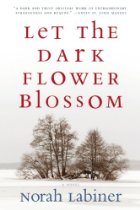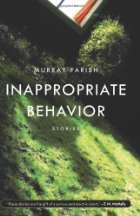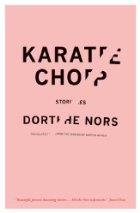What We’re Reading: Someone Else’s Wedding Vows

 Someone Else’s Wedding Vows by Bianca Stone (Tin House Books and Octopus Books, 2014)
Someone Else’s Wedding Vows by Bianca Stone (Tin House Books and Octopus Books, 2014)
Human relationships—from familial and fraternal to romantic and sexual—have always provided material for poets. And there is no better event for observing all types of relationships than at a wedding, a truly literal and figurative joining of two groups of families and friends. In her new collection, Someone Else’s Wedding Vows, Bianca Stone offers her creative insights into various relationships.
The title poem, “Someone Else’s Wedding Vows,” was inspired by assisting her sister, a wedding photographer, at a few events. The narrator is a wedding photographer lamenting her own relationships and choices in life as she photographs someone else’s big day.
And it’s true
I spent my whole life in fear of sharing my mind
but with a longing for it to be taken.
Year after year I could not even order myself to be touched.
I became a waitress who looked sad, dropping occasionally
into the bed of a maniac, who looked sadder
and meaner.
In an interview with TellTell Poetry, Stone states that after observing the weddings she realized “[s]omeone else’s vows are meaningless, and yet, they’re all so analogous. It both revolted and excited me.” As “Someone Else’s Wedding Vows” comes to a close, the narrator offers her own toast.
And where it’s driest I sit down with my wet drink.
I drink for the incidental. The heart of dust.
For my family and all their uneven moods.
For this audience of discreet psychotics
posing for photographs.
For the living deer ravaging gardens.
For the touch of sub-shrubs: lavender,
periwinkle and thyme—
touching the lingering otherness—
for this not being known,
rarely knowing
and for the ordinary monstrous knowing I love.
Stone’s poems succeed with her use of creatively mundane imagery. She declares, “My name looks good in gangster font” when considering her educational degrees in “The Future is Here.” She laments her flatlining intellect in “Dishes”—“Now my intelligence is a line of hieroglyphs, / a blouse fluttering.”
In the final poem, “Practicing Vigilance,” Stone begins with a startling, yet entirely apt, image.
Every day I try and write down one terrible thing.
One terrible thing—I’m filled with them,
carry each one
like an organ locked in a Coleman cooler.
The terrible things in your life, whether they’re things you’ve done or thought or had done to you, can be as simultaneously revolting and awe-inspiring as the organ in the cooler, and like the organ, sometimes you need those terrible things to survive. Because they are, and always will be, a part of you.
But by the end of the poem, Stone succinctly gets to the heart of all human relationships.
I’m coaxing the black bull out of my mouth
with a red flag and a beer. I’m constructing
out of my faulty genes,
my last sentence, my last thing
which addresses the dilemma obliquely:
we will perceive our own pain in others.
And we will know if we are capable of loving them.
We aren’t alone in suffering terrible things in our lives. Everyone has their own set of terrible things. It’s only a matter of finding a set of organ coolers we are willing and able to love.
Stone uses her worthy insights to deconstruct and analyze human relationships in the poems of Someone Else’s Wedding Vows, but she is also an accomplished visual artist, having created ink-and-watercolor comics and videos using her poems. Although there are no illustrations in Someone Else’s Wedding Vows, parts of some poems have been previously illustrated and can be viewed on her website. She described her use of illustration in a 2012 interview with The Comics Journal, “In my work I prefer to have the images move away from literal illustration of what the text is saying. I want to use the image as another element of form in poetry—to have the image offer more space for the reader to interpret and create meaning on their own.” Perhaps in her first full-length collection, Stone wanted the poetry to stand on its own. Speaking with Poetry Foundation, Stone admits, “I don’t want to tell anybody how to interpret a poetic line. It’s not good for the poem.” Stone did the cover illustration for Someone Else’s Wedding Vows, but I do wish more of her art had been included. The poetry, while strong on its own, is a whole new experience with the visuals (view her video for “Elegy with Judy Garland & Refrigerator” here).
Do illustrations enhance or diminish poetry? If combined with other media, does a poem become something other than a poem?
What We’re Reading: Let the Dark Flower Blossom

 Let the Dark Flower Blossom by Norah Labiner (Coffee House Press, 2013)
Let the Dark Flower Blossom by Norah Labiner (Coffee House Press, 2013)
A murder. Twins. A desolate island. Lies. These were all of the things that intrigued me about Let the Dark Flower Blossom by Norah Labiner. And it delivered. Murder? Possibly several. Twins? Yep. A desolate island? Check. Lies? Too many to count.
It may sound unprofessional, but Let the Dark Flower Blossom is perhaps the postmodern-est, metafiction-iest book I’ve read. But that’s all my brain has left after finishing the book. This is both a good thing and a bad thing. I’m glad I experienced it. But it also brought back every insecurity I had in my college contemporary literature class. A book like Let the Dark Flower Blossom, with all of its twists, turns, lies, half-truths, and perhaps truths, leaves me utterly unsure of my abilities as a reader. What am I missing that all the intelligent readers are “getting”? For all of my marginalia crowding the book, I’m still not sure I fully understand what I just experienced. Let me try to work through it for you.
Twins Sheldon and Eloise Schell meet Roman Stone in college. Sheldon and Roman are roommates and writers, and Roman falls for Eloise. Roman becomes a successful writer, while Sheldon becomes just a writer. Eloise marries a lawyer who specializes in getting victims of crimes to question their memories of events. Roman is murdered, and no one knows who did it. Eloise and Sheldon must dredge up a past they’d rather forget in order to get the answers they need now.
Sheldon claims he only shares his true story with his neighbor, whose memory is failing.
Each night the doctor forgot the story that I had told him the night before. He forgot that I told him about Father and Mother. He forgot what I told him about Eloise. He forgot that I told him about Pru. He forgot that I told him about the woods.
This was the nature of Dr. Lemon’s disease.
He forgot.
And I confessed again.
I remembered.
This was the nature of my punishment.
I could not forget.
Labiner has many beautiful passages in the book, but she also makes sure the reader doesn’t forget. Taking into account the number of characters recalling the past and the number of times and various ways they do it, bits of stories and phrases are excessively repeated, and the reader almost wishes they were allowed the luxury of forgetting.
I love books that twist and turn and have big blindsiding reveals in the end, but Let the Dark Flower Blossom gives the reader very little, if anything, to hold on to. As the past actions of Roman and Sheldon come to light, they are told and retold several times, in several variations, by several characters. Which version is the reader to trust? I’m not sure the reader can trust anyone. At least I didn’t. And that’s what makes the book so frustrating. The rug can be pulled out from under a reader only so many times before they decide they don’t want to get up again.
But Labiner’s command of language is impressive, and the reader continues on to witness her skillful manipulation of her craft.
Somewhere between ink and ether.
Between shoe and sock.
And tock and tick.
And scissors and rock.
Between either and or—
The coffee drip by drop fell into the pot.
Lovely passages like this are the impetus for the reader to forge ahead with the decidedly murky story. Let the Dark Flower Blossom is not an easy book. I’m not even sure I can say it’s satisfying. But, it’s an experience. And Labiner’s writing can be exquisite, painful, and enlightening, sometimes all at once. That’s why I’ll gladly seek out her other books. After an appropriate rest period, of course.
What types of books bring out your insecurities as a reader? Do you shy away from those books or try to face those insecurities down?







